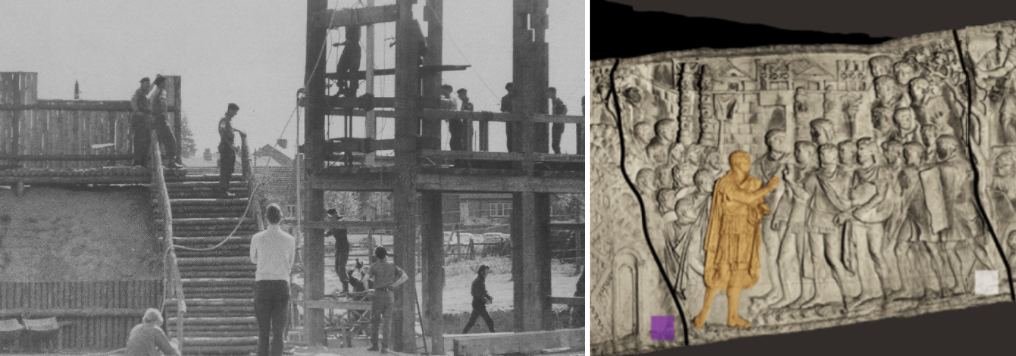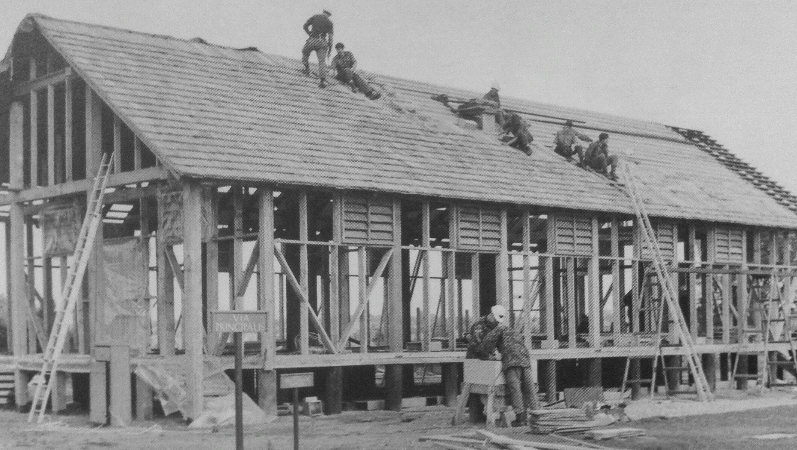The Rebuilding of Lunt Roman Fort
Margaret Rylatt MBE and the rebuilding of Lunt Fort
What makes Lunt Roman Fort such a special place to visit - aside from the knowledge of its uniqueness of its structure and gyrus - is the wonderful reconstruction of the granary, gyrus and gateway that really brings the site to life.
The reconstruction was overseen in the late 1960s and early 1970s by the archaeologist Margaret Rylatt MBE (seen in the photo below standing on the far right with a group of her students), using the same tools and techniques that the military engineers of the Roman Army would have used. It was a particularly nice touch for Margaret to persuade the Royal Engineers Army Team to build the replica Roman military buildings and defences at the Lunt Fort.

By challenging the soldiers to do what arguably the greatest army in history did 2,000 years ago with limited resources, it was a challenge they could not refuse. They first built ditches, then the ramparts, wooden fences and a grand entrance gate that is now the most recognised feature of the Lunt. These features of the fort were reconstructed upon the original foundations, including a section of the wall, a gateway, one of the three granaries and the gyrus.

With no evidence of the look of the gateway, other than the clues given by its archaeological footprint, it was decided to model the fort on images found on Trajan's column (detail above right). The image is taken from a National geographic Interactive Online Trajan's Column.
Each year the Army would come back and build something else, such as the Granary (see photo below) which houses the Museum and interpretation centre. After that came the 'Gyrus'; a horse training arena, unique in Roman history. Unfortunately the Army project stopped around the time of the Falklands war and was the start of many cuts in the military budget. This is sad as if the 'Principia' (Headquarters office block) and some of the barrack blocks could have been completed they could have been used as hotel chalets and hostels for students and families to experience the Roman way of life and also putting money back in to the running of the museum site. Perhaps this is something we can aim for in the future?

The reconstructions carried out at The Lunt in the late 1960s and early 1970s have given real insights into the durability of buildings and defences within military establishments, and how much resource was required.
These photos were sourced from the Coventry Society Obituary for Margaret Rylatt MBE.
